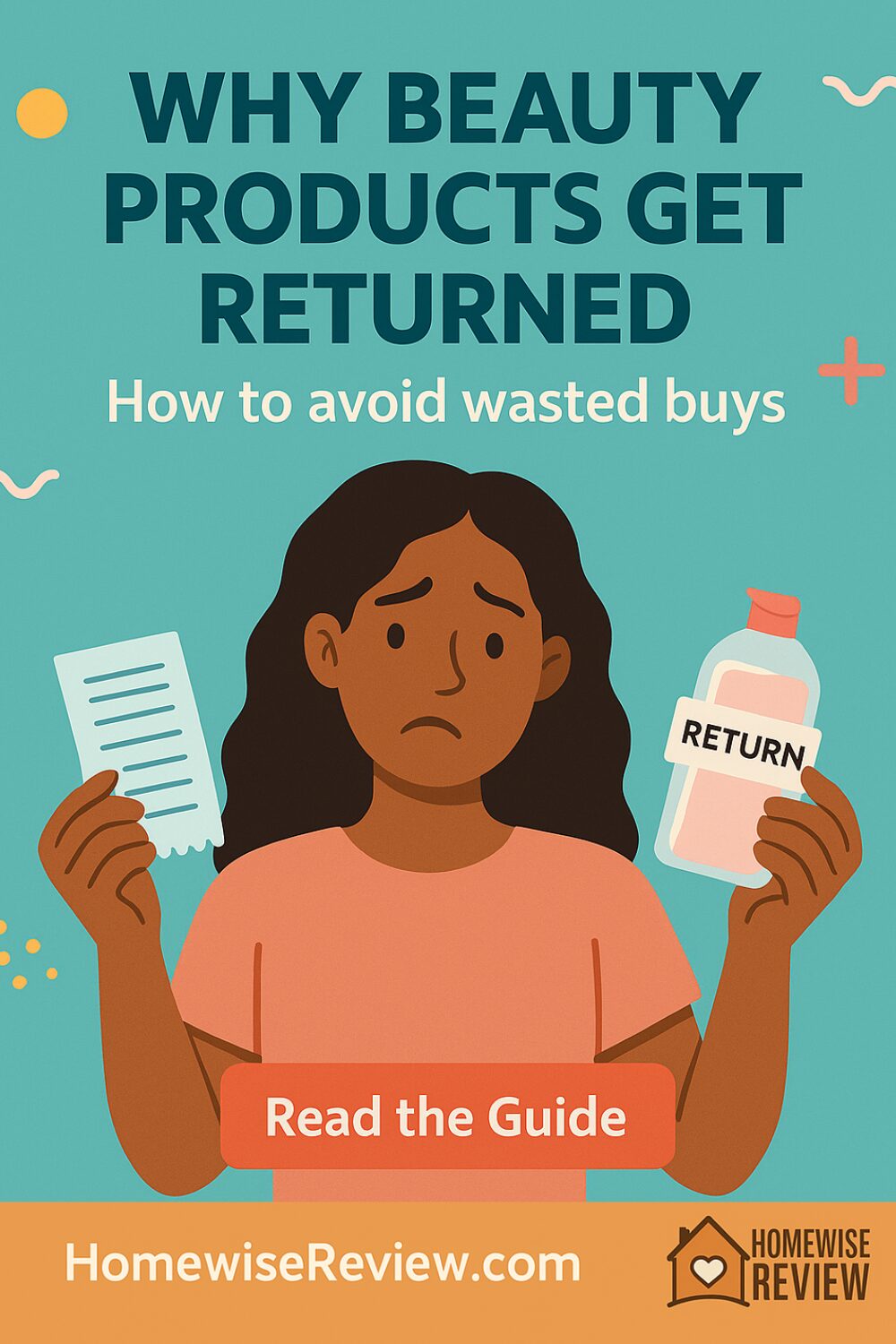
Beauty returns are on the rise as online shopping grows. While overall beauty has a relatively low return rate (around 4–5%) compared to categories like apparel, the costs and headaches can be high freeyourself.com. A recent industry survey found that 73% of retailers saw higher return rates in cosmetics over the past year happi.com. High-value products and those that require a precise match or personal preference are most at risk. For example, returning a $100 foundation is costly when 20% or more of its price may be eaten up by return shipping and restocking loopreturns.com. In short, even if fewer beauty items are returned by percentage, each return can cut deeply into margins.
Top Categories Returned
Certain beauty categories consistently lead in returns. In makeup, color-matching products top the list. Foundations and concealers are famously hard to pick online – customers often get the wrong shade or undertone and send items back freeyourself.com. Likewise, lipsticks and glosses frequently return when the actual color looks different than expected. Eye makeup (mascaras, liners, shadows) can be returned if it smudges, flakes, or simply doesn’t wear well. Many shoppers don’t realize a product’s texture or finish until after purchase, leading to disappointment.
In skincare, formulas that irritate or underperform are common culprits. High-potency products like retinoids, acids, and exfoliants may cause allergic reactions or breakouts for some users, triggering returns. Even hydrating serums and creams can be returned if they feel greasy, cause pilling, or don’t make skin look or feel better. Essentially, any skincare item that fails to meet expectations (or causes a rash!) is at risk of being sent back.
Haircare products also see lots of returns when they don’t deliver promised results. Shampoos, conditioners or styling products may simply not suit a customer’s hair type, leaving hair frizzy, flat or unmanageable. At-home hair dyes are another headache: if the color comes out too light, dark, or causes scalp irritation, customers often return the kit. (Salon brands like Sally Beauty controversially allow even opened color returns in such cases.) Overall, any hair item that falls short – from a purportedly volumizing shampoo that does nothing, to a curl cream that flakes – is likely to be returned.
Other beauty items often sent back include fragrances (hard to test online) and beauty tools/devices (if they arrive damaged or don’t work as expected). The common thread is clear: products requiring a perfect color, scent or performance match tend to have the highest return rates.
Common Reasons Customers Return Beauty Products
Behind every return is a customer complaint. The top return reasons in beauty mirror what logistics experts report:
- Shade or Color Mismatch: The #1 gripe is getting a product that looks different in person. Foundation, blush, lipstick and hair color are notorious for online photos not matching reality. As BeautyPackaging notes, shade mismatches and unexpected textures are frequent return causes.
- Allergic or Sensitivity Reactions: Cosmetics can cause rashes or irritation. Brands say customers often return items due to an allergic reaction. Common culprits include fragrances, preservatives or active ingredients (like salicylic acid). When skin reacts badly, buyers rightfully send products back.
- Poor Performance or Texture: “It just didn’t work for me” is a frequent reason. Examples: a serum that didn’t hydrate, a mascara that clumps, or a hairspray that left residue. If a beauty item fails to deliver its promise (e.g. “brighter skin in 7 days”), customers lose trust and return it atomixlogistics.com.
- Packaging Problems: Damaged boxes, leaky bottles or broken applicators drive returns too. A cracked jar of cream or spilled shampoo in shipment gives users a quick reason to send it back. Retailers note that damaged products are among the cited reasons.
- Expectations vs. Reality: Sometimes returns happen because the product was simply not as described. For example, a cream advertised as lightweight turns out greasy, or a tester’s experience doesn’t match the full-size. In the age of glossy marketing, misaligned expectations are common.
- Practical Reasons: Other factors include buying the wrong item (e.g. mistaken purchase), or changes of mind. Some customers “bracket” their choices (buying multiple options to try) and then return the extras.
Industry surveys highlight these points. For example, logistics experts list allergic reactions, bad texture/scent, wrong color, and damaged items as the main causes of personal-care returns. Likewise, BeautyPackaging reports that “shade mismatches, unexpected texture, and allergic reactions” consistently top beauty return issues.
What to Learn Before You Buy
The good news is there are ways to avoid these common mistakes. Here are some tips every beauty shopper can use:
- Test First, Buy Later: Use in-store testers or ask for samples of high-risk items (foundations, skincare). Brands often offer sample sachets or mini versions. Trying a tiny amount on your skin (patch tests for skincare) can reveal allergies or mismatches before investing in the full product.
- Double-Check Your Shade: Don’t rely solely on smartphone photos. Use shade-match tools or virtual try-ons when shopping online. In fact, retailers report that augmented-reality try-on apps can slash returns – Shopify found a ~40% drop when merchants used 3D AR visualization loopreturns.com. When possible, swatch lipstick or foundation in natural light to verify the color.
- Read Reviews & Q&A: Customer reviews often mention if a product ran small, was harsh, or leaked in shipping. Pay attention to comments about delivery experience, too. If many buyers say “this mascara smudged” or “this serum burned my face,” it’s a red flag.
- Know Your Ingredients & Needs: If you have sensitive skin, look for fragrance-free or hypoallergenic formulas. Match product claims to your own hair/skin type (e.g. a “moisturizing” shampoo if you have dry hair). This reduces surprises like “this toner is too strong” that lead to returns.
- Check Return Policies: Before buying, see if the retailer accepts opened beauty returns and for how long. Some stores (e.g. Sephora, Amazon, Target) are known for generous 30–90 day return windows on cosmetics beautyindependent.com. Buying from sellers with flexible return policies gives you a safety net.
- Buy the Right Size: If you’re trying a new product, start with a smaller size or travel set. That way, if it doesn’t work out, at least you lose less and worry less about restocking fees.
- Mindful Shopping: Finally, avoid impulse buys. Pause and ask: “Do I really need this product?” Buying on a whim (especially expensive beauty gear) often ends in regret and returns.
By doing a little homework—researching products, testing shades, and knowing your preferences—you can greatly reduce the chance of disappointment. Many beauty brands now offer tools (virtual try-on, skin analyzers) to help you make the right choice up front. Taking advantage of these can save time and money.
See Also
If returns are usually down to performance or mismatch, start with the right wash step. Our brand-agnostic picks in Best Shampoo for Frizzy Hair tame halo fluff from the rinse, while Best Shampoo for Curly Hair keeps curl clumps smooth and springy. If silver strands look dull or yellow, Best Shampoo for Gray Hair explains when to use purple shampoo and when to clarify, so you buy once and get it right.
Still seeing hit-and-miss results? Two smart checkpoints help most shoppers avoid do-overs. Best Shampoos for Low Porosity Hair shows how to reset build up so moisture can actually absorb, and Best Drugstore Eyebrow Pencil covers undertone, tip shape and pressure control for natural brows without the “wrong shade” return.
Sources: Industry reports and expert analyses on beauty return trends and customer feedback
